Wilderness Herbal Poultices: Natural First-Aid
Discover the art of making Wilderness Herbal Poultices in the wilderness for natural first aid. Learn to identify plants, prepare remedies, and treat injuries using nature's pharmacy.
HERBALISM
Kathrine-Anne Hill
10/29/202415 min read

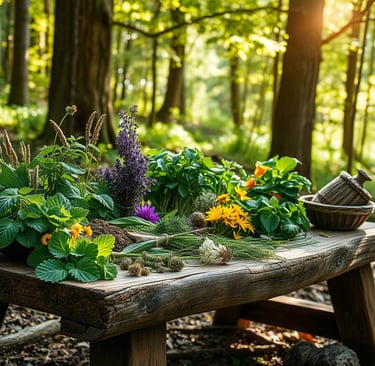
Affiliate Disclosure:
Please note that some of the links in this article are affiliate links. This means that if you click on these links and make a purchase, I may receive a small commission at no additional cost to you. This commission helps support the maintenance and growth of this website and allows me to continue providing valuable information and recommendations. Rest assured, I only recommend products and services that I have personally used or thoroughly researched. Your support is greatly appreciated! “As an Amazon Associate I earn from qualifying purchases.” For full disclosure see our Privacy Policy and Terms and Conditions here.
Wilderness Herbal Poultices: Natural First Aid
I've always been amazed by nature's healing power. Exploring the Canadian wilderness, I learned making herbal poultices is key. These natural remedies blend tradition with practicality in the outdoors.
Many overlook herbal medicine in wilderness survival. But, I've found poultices can be a lifesaver when far from a pharmacy. They're great for soothing bites and minor wounds.
The best wilderness herbal poultices mix herbs like calendula, plantain, and violet leaves. These plants are easy to find in the wild. I've used them to treat poison ivy and sunburns with great success.
Wilderness herbal medicine is simple. With basic tools and knowledge of local plants, you can make powerful remedies. Fresh herbs are best, but dried ones work well if prepared right.
Key Takeaways
Herbal poultices are essential wilderness survival skills
Natural remedies can treat various outdoor ailments effectively
Fresh herbs like calendula and plantain are ideal for poultices
Basic tools and plant knowledge are all you need
Poultices can address issues from rashes to minor wounds
Making herbal poultices in the wilderness is a simple yet powerful skill
Introduction to Wilderness Herbal Medicine
I've always been amazed by nature's healing power. Wilderness herbal medicine is a key part of survival skills. It mixes old indigenous knowledge with new bushcraft herbalism to make strong natural remedies.
The importance of natural remedies for wilderness wounds
Being in the wild means you can't always get modern medicine. That's why knowing natural remedies is very important. Herbs like chamomile, echinacea, and ginger are good for general health. They help boost immunity, improve sleep, and lower stress.
In survival situations, staying calm is key. Knowing a bit about herbal remedies can really help. For instance, cattails are useful plants with many edible parts all year.
Brief history of herbal poultices
Herbal poultices have been around for over 60,000 years. They're a key part of traditional herbal medicine, like Ayurveda and Traditional Chinese Medicine. Poultices are made from wild or farm-grown herbs. They're put on the skin to treat different health issues.
Learning about wilderness herbal medicine can really improve your outdoor adventures and survival skills.
Understanding Poultices: What They Are and How They Work
Poultices are natural remedies used for thousands of years. They are great for wilderness survival. These are made from crushed herbs applied to the skin to treat various conditions.
They work by letting the herbs' active compounds soak into the skin. This gives localized relief and healing. You can use fresh or dried herbs, held in place with a cloth or bandage.
There are different types of poultices:
Emollient poultices use mucilage herbs to soften skin
Medicated poultices contain herbs with specific actions like astringents
Clay poultices made from bentonite clay can remove toxins
I've found poultices great for scrapes, muscle pains, insect bites, and rashes. They're easy to make with just herbs and water. For bigger areas, I blend herbs into a paste and apply it 1-2 cm thick.
Essential Herbs for Wilderness Poultices
In my wilderness adventures, I've learned to forage for medicinal plants. It's important to know how to identify wild plants for herbal medicine. Here are some key herbs for wilderness herbal poultices I always look for.
Plantain (Plantago major)
Plantain is my top choice for insect bites and small wounds. It's also good for allergic rashes and mouth ulcers. Plus, it helps with irritable bowel syndrome and constipation.
Yarrow (Achillea millefolium)
Yarrow is a strong herb for herbal medicine. I use it for cuts and wounds. Its anti-inflammatory and anti-bacterial properties are great for colds, flus, and high blood pressure.
Comfrey (Symphytum officinale)
Comfrey is my go-to for quick healing of wounds and broken bones. Its ability to promote cell growth is invaluable in wilderness first aid.
Identifying and Harvesting Wild Medicinal Plants
Learning to identify wild plants is key in bushcraft herbalism. I've spent years learning to find useful plants in nature. Foraging for medicinal plants requires careful observation and respect for the environment.
Key Identification Features
In the wilderness, I look for specific plant features. I check the shape of leaves, the structure of flowers, and how plants grow. For instance, dandelions have distinctive leaves and grow 5-50 cm tall. Wild garlic, found in damp woodlands, has a unique smell.
Ethical Foraging Practices
Foraging responsibly is key to protect nature. I only take what I need, so plants can grow back. This way, wildlife can survive. I avoid picking endangered plants and stay away from areas near roads or industrial sites for clean plants.
Learning these skills has improved my bushcraft herbalism. It's a journey that connects me with nature's healing power.
Making Herbal Poultices in the Wilderness
In the wild, knowing how to make herbal poultices can be a game-changer for outdoor first aid. Mastering poultice preparation techniques is essential for wilderness survival skills. Let's dive into the process and tools needed for this natural healing method.
Step-by-step Guide to Poultice Preparation
Creating a poultice is simpler than you might think. First, I gather the chosen herbs like yarrow, calendula, or comfrey. Then, I crush them using a rock or by chewing. Next, I apply the crushed herbs directly to the affected area. For a more potent effect, I wrap the herbs in a clean cloth and apply it as hot as I can stand.
Tools and Materials Needed
To make effective poultices in the wilderness, I always carry these items:
Mortar and pestle or flat rock for crushing herbs
Clean cloths for wrapping
Small containers for storing prepared poultices
Bandages or tape for securing the poultice
By mastering these poultice preparation techniques, I've enhanced my outdoor first aid skills significantly. It's amazing how effective these natural remedies can be when you're far from civilization.
Common Wilderness Injuries Treatable with Poultices
In my outdoor adventures, I've found that nature offers amazing solutions. Herbal poultices are a key part of outdoor first aid. They provide natural remedies for many injuries. From cuts and bruises to insect bites and burns, these plant-based treatments can be lifesavers when you're far from civilization.
I've discovered that certain plants are great for making poultices in the wild. Aloe vera is known for its healing properties and is excellent for burns and skin irritations. In the Rocky Mountains, I've used aspen leaves to relieve pain and inflammation. Sage is my go-to for repelling insects and treating wounds.
While these natural remedies are effective, knowing when to seek professional help is key. Always be prepared and stay safe in the wilderness!
Poultices for Pain Relief and Inflammation
In outdoor first aid, herbal poultices are lifesavers. Plants like arnica and willow bark are great for pain and swelling. They're perfect when you're far from a pharmacy.
Arnica for Bruises and Sprains
Arnica is great for bruises and sprains in the wild. I make a poultice by mashing fresh arnica flowers. Then, I apply it to the affected area.
This natural remedy reduces swelling and eases pain. It's ideal for outdoor adventures.
Willow Bark for General Pain
Willow bark is like nature's aspirin. I make a pain-relieving poultice by soaking willow bark in warm water. Then, I apply it to sore muscles or joints.
It's a versatile herbal medicine for general pain. It's great for hiking or camping trips.
When using these natural remedies, make sure to identify plants correctly. Always apply poultices safely. With these herbal tools, you'll be ready to handle pain and swelling in the wilderness.
Healing Cuts and Wounds with Herbal Poultices
In the world of wilderness survival, natural remedies are key for outdoor first aid. Herbal poultices are great for treating cuts and wounds when you're away from doctors.
Yarrow is a top herb for deep cuts. It helps blood clot and fights off infection. For small scrapes, plantain is perfect. It soothes wounds well.
Comfrey, or "knitbone," helps wounds heal fast. But always clean the wound first. This step is critical to avoid problems.
Fresh poultices are best for wounds and infections. Mix yarrow, violet, chickweed, and plantain for a strong healing mix. For deep wounds, use calendula on a band-aid to help heal from the inside.
Nature gives us amazing tools for survival. Learning these natural remedies makes you ready for outdoor first aid.
Treating Insect Bites and Stings Naturally
In the wilderness, insect bites and stings are common. I always carry natural remedies in my outdoor first aid kit. Let's look at how to use plantain and yarrow poultices for quick relief.
Plantain Poultice for Bee Stings
Plantain is great for treating bee stings. It's very effective in reducing pain and swelling. To make a poultice, I chew up a plantain leaf and apply it to the sting site.
This wilderness survival skill has saved me from many uncomfortable hikes.
Yarrow for Mosquito Bites
Yarrow is my go-to for mosquito bites. It helps with itching and inflammation. I crush fresh yarrow leaves and place them on the affected area.
This natural remedy works wonders in the outdoors.
Here's a simple guide for making an herbal poultice mix:
Mix these ingredients to form a paste. Apply to bites or stings for quick relief. This blend combines the best of natural remedies with essential wilderness survival skills for effective outdoor first aid.
Poultices for Burns and Skin Irritations
Natural remedies like herbal poultices are lifesavers for burns and skin irritations. They have been used for centuries in herbal medicine. They prove their worth every time.
Aloe vera is great for minor burns. It cools and soothes the skin right away. I always carry some in my first aid kit. For sunburns and skin irritations, calendula is the answer. It heals damaged skin amazingly well.
Jewelweed poultices are a game-changer for poison ivy or oak rashes. They reduce itching and inflammation. This makes outdoor adventures much easier.
Plantain poultices treat minor wounds, burns, and even blood poisoning
Dried plantain works when fresh leaves are not available
Poultices are most effective on skin that's been made permeable, like after a hot bath or in humid weather
Over 20 species of Artemisia in Canada have medicinal uses. Spruces are also used by Indigenous peoples for healing. Even dandelion leaves can help stimulate appetite and aid digestion.
While natural remedies are effective, knowing when to seek medical help is key. Always prioritize safety in your outdoor adventures.
Addressing Infections with Antimicrobial Herbs
In wilderness survival, natural remedies are key for treating infections. Herbal medicine has strong antimicrobial properties. These can be lifesaving when medical help is far away.
Garlic as a Natural Antibiotic
Garlic is a strong natural antibiotic. I've used garlic poultices to prevent and treat wound infections in the wild. Its antimicrobial properties make it a must-have in my first aid kit.
Echinacea for Immune Support
Echinacea is a valuable herb for wilderness survival. I use echinacea poultices to boost the immune system and fight infections. It's easy to identify and use in the field.
These herbs have saved me many times when facing infections in remote areas. Learning to identify and use these natural remedies is key for wilderness survival.
Combining Herbs: Creating Effective Poultice Blends
Mixing herbs can make poultices more powerful. By combining different plants, we can create stronger natural remedies. Let's look at some effective ways to make poultice blends in the wilderness.
One of my favorites is yarrow and plantain. It's perfect for healing wounds. Yarrow stops bleeding and fights germs, while plantain draws out toxins and speeds up healing. I've used it on cuts and scrapes many times, and it works great.
For skin issues, I mix comfrey and calendula. Comfrey helps new skin grow, and calendula soothes inflammation. This blend is amazing for burns, rashes, and minor cuts.
For pain and swelling, I use arnica and St. John's Wort. This mix eases pain and reduces swelling in bruises, sprains, and joint pain. It's a big help on long hikes!
The secret to good herbal medicine is knowing your plants and how they work together. Start with these blends and then try your own mixes for different problems.
Safety Considerations and Contraindications
When using wilderness survival skills and natural remedies for outdoor first aid, safety is key. I always stress caution when using herbal poultices in the wild. It's important to know the risks and when to get professional help.
Potential Allergic Reactions
Before using any herbal poultice, I test it on a small skin area. This step helps spot any allergic reactions. With 12.8% of U.S. adults using herbal supplements, being aware of allergies is very important.
When to Seek Professional Medical Help
Herbal poultices work well for minor injuries, but serious cases need a doctor. I look for medical help in these situations:
Deep wounds or punctures
Persistent or worsening infections
Symptoms that don't get better with herbal treatment
Allergic reactions to herbs
In some countries, traditional medicine is a big part of healthcare. For example, in China, it makes up about 40% of healthcare. This shows the value of natural remedies but also the need for caution and professional advice when needed.
While outdoor first aid skills are useful, they can't replace professional medical care for serious issues. Always put safety first and seek help when unsure.
Storing and Preserving Herbal Poultice Materials
In wilderness survival, knowing how to store herbal medicine is key for outdoor first aid. Proper storage keeps medicinal plants fresh for when you need them.
Drying herbs is the first step. I spread them on a clean surface, away from sunlight. Once dry, they go in airtight containers. This works for leaves, flowers, and some roots.
For longer storage, I make tinctures or infused oils. These last longer and are great for making poultices. Here's a simple guide for making tinctures:
Fill a jar 2/3 full with dried herbs
Cover completely with high-proof alcohol
Seal and store in a cool, dark place for 4-6 weeks
Strain and bottle the liquid
Pre-made poultices can be kept in the fridge for a bit. For trips, I pack dried herbs in waterproof bags. This lets me make fresh poultices as needed.
Conclusion
Making herbal poultices in the wilderness is a key survival skill. Canada's boreal forest has 546 medicinal plants used by Aboriginal people. These plants treat 28 diseases, showing their wide use in first aid.
Herbs and shrubs are the main sources for these remedies. Metis women depend on local plants for medicine. Plants like Sweetgrass and Cedar are sacred, used in healing ceremonies.
Herbal poultices can treat many ailments, from arthritis to cancer. Traditional healers know a lot about plant medicine. They use herbs, sweat baths, and poultices to balance the body.
In short, learning to make herbal poultices improves our survival skills. It also connects us to a long tradition of natural healing. By learning from these practices, we're better prepared for outdoor adventures and emergencies.
For further reading on poultices, my book, Soothing Potions: Crafting Effective Herbal Salves, Balms and Poultices, is available from our eBooks page.
FAQ
What are herbal poultices and why are they important for wilderness survival?
Herbal poultices are made from crushed herbs applied to the skin. They treat various conditions naturally. This makes them key for survival when you can't use modern medicine.
How do herbal poultices work?
The herbs in poultices release healing compounds through the skin. They can be made from fresh or dried herbs. A cloth or bandage holds them in place.
What are some common medicinal herbs used for making poultices?
Important herbs include plantain for bites and minor wounds, and yarrow for cuts. Comfrey heals wounds and bones, while burdock treats bruises and boils. Selfheal boosts wellbeing and fights viruses.
How important is proper plant identification when foraging for medicinal herbs?
Identifying plants correctly is vital for safe herbal use. Look at leaf shape, flower structure, and growth. Foraging ethically ensures sustainability and safety.
What are some common wilderness injuries that can be treated with herbal poultices?
Poultices help with cuts, bruises, sprains, bites, stings, minor burns, and skin issues. They also reduce pain, swelling, and infections when other treatments fail.
How can poultices be used for pain relief and inflammation?
Arnica poultices ease pain and swelling from injuries. Willow bark offers natural pain relief. Ginger, turmeric, and meadowsweet are also anti-inflammatory options.
What are some tips for making and applying herbal poultices?
Crush or chew the herb and apply it to the area. Wrap it in a cloth for better application. Use a mortar and pestle, clean cloths, and containers for storage.
Are there any safety considerations when using herbal poultices?
Always test herbs on a small skin area first. Some herbs, like comfrey, are not for deep wounds. Seek medical help for severe injuries or worsening symptoms.
How can I store and preserve herbal poultice materials for future use?
Dry herbs well and store them in airtight containers. Keep them away from sunlight. Store pre-made poultices in the fridge. For longer storage, make tinctures or infused oils.
Source Links
Topical Benefits of Calendula: How to Make A Soothing Herbal Poultice with Fresh or Dried Herbs - https://chestnutherbs.com/how-to-make-calendula-poultice/
Ethnobotany Expedition: Wild Cooking & Herbal Medicine - https://www.wolfcollege.com/expeditions/summer/herbal-medicine-wild-edible-plants/
Edible Weeds: Herbal Medicine in Your Back Yard » Wilderness Awareness School - https://wildernessawareness.org/articles/edible-weeds-herbal-medicine-chest-in-your-back-yard/
Herbal Medicine 101: How You Can Harness the Power of Herbs - https://www.healthline.com/health/herbal-medicine-101-harness-the-power-of-healing-herbs
Jason Knight: Survival Skills for Herbalists - https://www.learningherbs.com/podcasts/herb-mentor-radio/episodes/2148582427
How to Make A Herbal Poultice — Follow the Wildflowers - https://www.followthewildflowers.com/blog/how-to-make-a-herbal-poultice
Making Herbal Poultices and Compresses - Medicinal Forest Garden Trust - https://medicinalforestgardentrust.org/making-herbal-poultices-and-compresses/
How to Make an Herbal Poultice with Comfrey - https://www.learningherbs.com/blog/how-to-make-an-herbal-poultice
5 plants for your herbal first aid kit - https://www.jackravenbushcraft.co.uk/5-plants-herbal-first-aid-kit/
10 Best Herbs to Start Your Home Herbal Apothecary - https://chestnutherbs.com/10-best-herbs-to-start-your-home-herbal-apothecary/
Foraging for Herbs and Medicinal Plants — Recipes & Roots - https://www.recipesandroots.ca/foraging/foraging-for-herbs-and-medicinal-plants
Medicinal Plant Guide - Manitou Mounds | Manitou Mounds - https://manitoumounds.com/nature/medicinal-plant-guide/
Ethnobotany - Indigenous & First Nations Books - Strong Nations - https://www.strongnations.com/store/item_list.php?it=1&cat=4714&new=1
Indispensable Herbal First Aid - Yarrow, Calendula & Comfrey Poultice - - https://celialinnemann.com/2020/08/23/indispensable-herbal-first-aid-yarrow-calendula-comfrey-poultice/
Poultices - https://www.slideshare.net/slideshow/poultices/73650554
Wild Survival: 6 Medicinal Plants You Should Know - https://gearjunkie.com/camping/survival-wild-6-medicinal-plants-know
How To Make Poultices And Compresses - https://whisperingearth.co.uk/2011/08/23/how-to-make-poultices-and-compresses/
Plant Poultices — Wildness Within - https://www.wildnesswithinliving.com/blog/2016/5/12/plant-poultices
3 Ways to Create a Poultice - wikiHow - https://www.wikihow.com/Create-a-Poultice
Wounded orangutan seen using plant as medicine - https://www.bbc.com/news/science-environment-68942123
Herbal First Aid - https://wildwoodinstitute.com/2022/03/09/herbal-first-aid/
How to Soothe a Bee Sting at Home & in the Wild - https://blog.mountainroseherbs.com/how-to-soothe-a-bee-sting-at-home-and-in-the-wild
Herbal Insect Bite Relief @ Renee Tougas - https://renee.tougas.net/blog/herbal-insect-bite-relief/
Plantain Poultice – How to Make for Wounds, Bites, Rashes, & More!! - https://naturalingredient.org/?p=1826
Traditional Medicines of the Sahtu & Dene - https://nwlc.ca/index.php/events-news/traditional-medicines
5 Antimicrobial Herbs for Your Medicine Chest - https://chestnutherbs.com/5-antimicrobial-herbs-for-your-medicine-chest/
Antimicrobial Resistance and the Role of Herbal Medicine: Challenges, Opportunities, and Future Prospects - https://link.springer.com/content/pdf/10.1007/978-3-031-43199-9_71
Plant Products as Antimicrobial Agents - https://pmc.ncbi.nlm.nih.gov/articles/PMC88925/
Treating Skin Issues with Poultices — Herbs & Hands CST - https://www.herbsandhands.com/how-1/herbal-poultices
Recipes - https://www.wildmountainherbalcollective.com/recipes
How to Make an Herbal First-Aid Ointment - https://www.learningherbs.com/blog/herbal-first-aid-ointment
Herbal Medicine - Herbal Medicine - https://www.ncbi.nlm.nih.gov/books/NBK92773/
The Medicine of Pine - https://chestnutherbs.com/the-medicine-of-pine/
Poultices - http://bushcraftusa.com/forum/threads/poultices.225013/
How to Harvest Herbs for Medicinal Purposes - https://melissaknorris.com/podcast/5-tips-to-harvest-herbal-flowers-for-medicinal-purposes/
Medicine Making Simple Techniques for the Domestic Herbalist - https://veriditashibernica.org/plant-pages-recipes/medicine-making/
Traditional use of medicinal plants in the boreal forest of Canada: review and perspectives - https://pmc.ncbi.nlm.nih.gov/articles/PMC3316145/
Traditional Metis Medicines and Healing - https://www.metismuseum.ca/media/document.php/14667.Traditional Metis Medicines.pdf
Microsoft Word - Traditional Medicine Paper.doc - https://lfs-indigenous.sites.olt.ubc.ca/files/2014/07/RayObomsawin.traditional.medicine-1.pdf


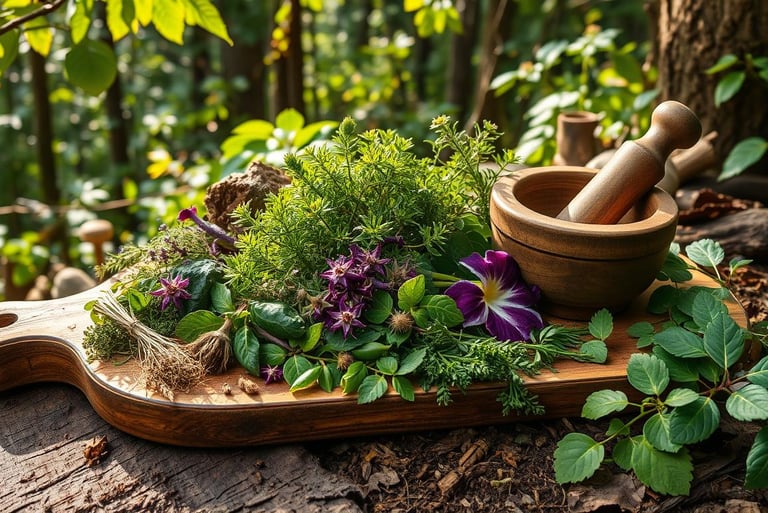

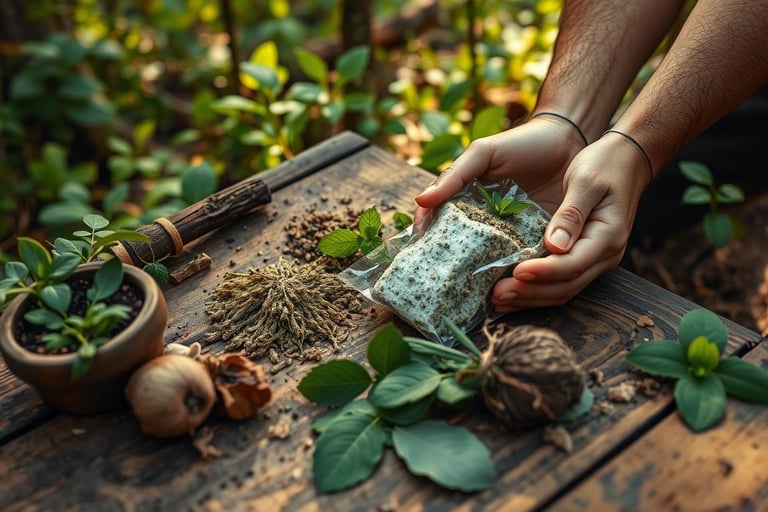

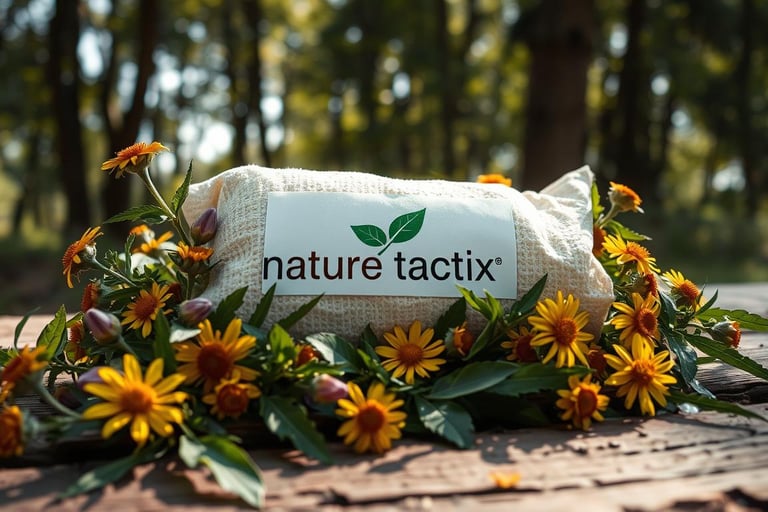


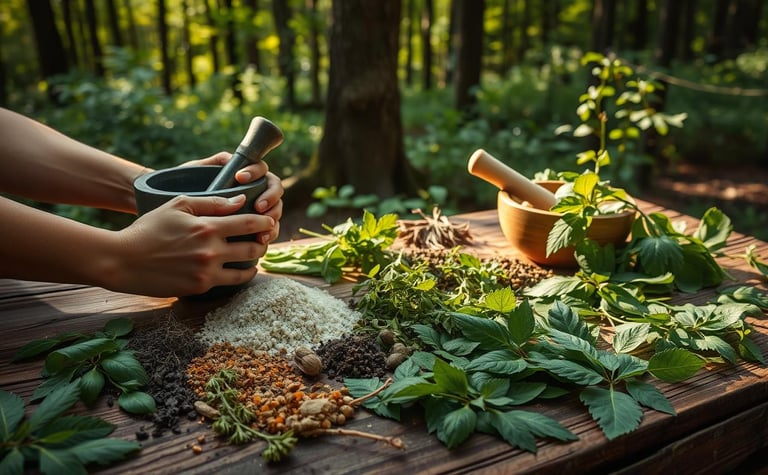




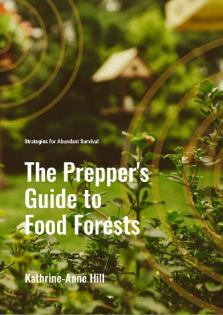

The Prepper's Guide to Food Forests: Strategies for Abundant Survival is a concise, step-by-step guide to creating a self-sustaining food forest. Ideal for preppers, it covers essential topics like design, plant selection, permaculture, companion planting, and wildlife integration. Learn how to maintain your forest, boost yields, and make it part of your survival strategy.
Highlights:
Basics of food forests and their benefits
Designing and selecting resilient plants
Creating a self-sustaining ecosystem
Using permaculture and companion planting
Maintenance, harvesting, and wildlife habitats
Food forests as part of a prepper strategy
Perfect for anyone seeking long-term food security.
Sign-Up and receive my FREE eBook The Prepper's Guide to Food Forests: Strategies for Abundant Survival !
As always, be sure to check our website for more wilderness tips and gear updates!
